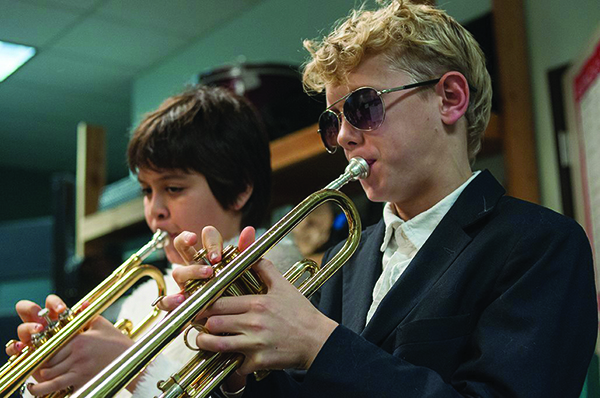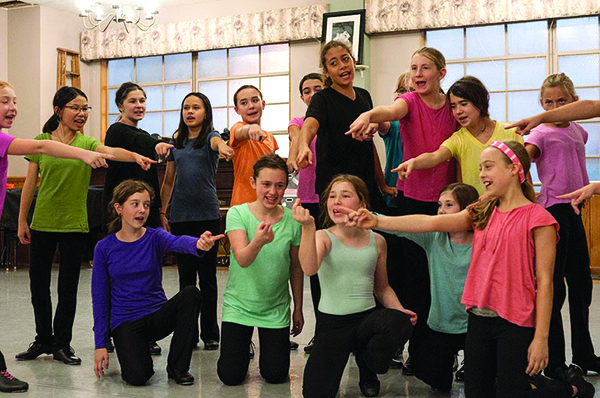

by Kelley Gardiner
Even if your child doesn’t pursue a career in the arts, it doesn’t mean that they can’t benefit from being immersed in music, dance, and visual arts from an early age. And who knows… they might just end up being the next Yo-Yo Ma or Misty Copeland.
ARTS & COMMUNICATION MAGNET ACADEMY (ACMA)
ACMA, located in Beaverton, serves students in grades 6-12. A magnet school of Merit, ACMA offers an arts-integrated curriculum. Students are eligible to earn an Arts & Communication Magnet Academy endorsement with emphasis in an arts Career Pathway. Pathway endorsements include Performing Arts like Dance, Music and Theatre or Visual Arts including Ceramics & Sculpture, Drawing & Painting, Photography and Moving Image Arts.
BUCKMAN ARTS FOCUS ELEMENTARY SCHOOL
This arts focus option school is a popular choice for parents and children in the Portland Public School District. Arts programming isn’t just available to a few students who’re interested at Buckman. Instead, it’s available to all students, and completely integrated throughout the curriculum. Academic concepts are presented in artistic ways, and famous artists are studied in depth. Performance is also an important part of the Buckman experience, giving students the confidence they need in life. If you’re in the neighborhood, you’re in. Other interested PPS families
have to take their chance at the lottery.
CATLIN GABEL
Visual and performing arts are part and parcel with the attending at the “progressive independent day school”
at Catlin Gabel, with woodshop, visual, performing, and media arts all integrated into the curriculum. Catlin Gabel strives to create well-rounded students and graduates, so creative thinking, music, and arts are a thoughtful and important part of every week’s schedule.
Current middle school students also get to take “co-curricular classes” during the school day instead of competing
for precious time outside the classroom: In Fall 2015, these art classes included choir, marimba, Mexican string art, and stagecraft. Art exhibitions from students, alumni, and local artists are also on display.
Just because it’s a private school doesn’t mean that older students don’t have choices they might find elsewhere: 130 core and elective classes are listed for students in the Upper School, including music, visual arts, and theater classes.

DA VINCI ARTS MIDDLE SCHOOL
Leonardo da Vinci was not just an artist. He was considered a prime example of a “Renaissance Man” for his interest
in (among other things) invention, architecture, science, mathematics, engineering, anatomy, geology, history, cartography. And and of course, he also happened to be a great painter and sculptor. Students at this namesake PPS school might not end up quite so well- rounded, but teachers will do their best to try. All students take six classes, four of which are academic classes, the other two of which are either arts or study skills, depending on the student’s needs. Visual arts, dance, drama, and music are all available branches of the arts. Your student might have the chance to take painting, printmaking, ceramics, darkroom photography, band, choir, jazz, tap, or African drumming.
NORTHWEST ACADEMY
If you’re looking for an urban arts option, Northwest Academy is right downtown near to Portland Art Museum and
other cultural institutions that lend themselves to an arts education. This middle school/ high school is committed to inspiring students to discover their intellectual and artistic voices in a creative and supportive atmosphere, fueled by curiosity and constructive challenge. And preps kids to become innovative thinkers, college and beyond.
OPAL SCHOOL
Imagine getting to go to school every day at the Portland Children’s Museum: That’s the reality for the students of Opal School. For K-5, Opal School operates as a public charter school in contract with the Portland Public Schools system. In addition to the amenities provided by being housed in the Children’s Museum, and at the doorstep of Washington Park and the Oregon Zoo, Opal School provides “access to the many forms of communication found in the languages of the arts and sciences including clay, painting, drawing, writing, poetry, dramatic arts, natural materials, wire, light and shadow, robotics, dance, music, and more.”
Kelley Gardiner is a Portland native, a freelance writer and blogger, and the mother of one sweet toddler. To see what she’s up to, visit kelleygardiner.com
